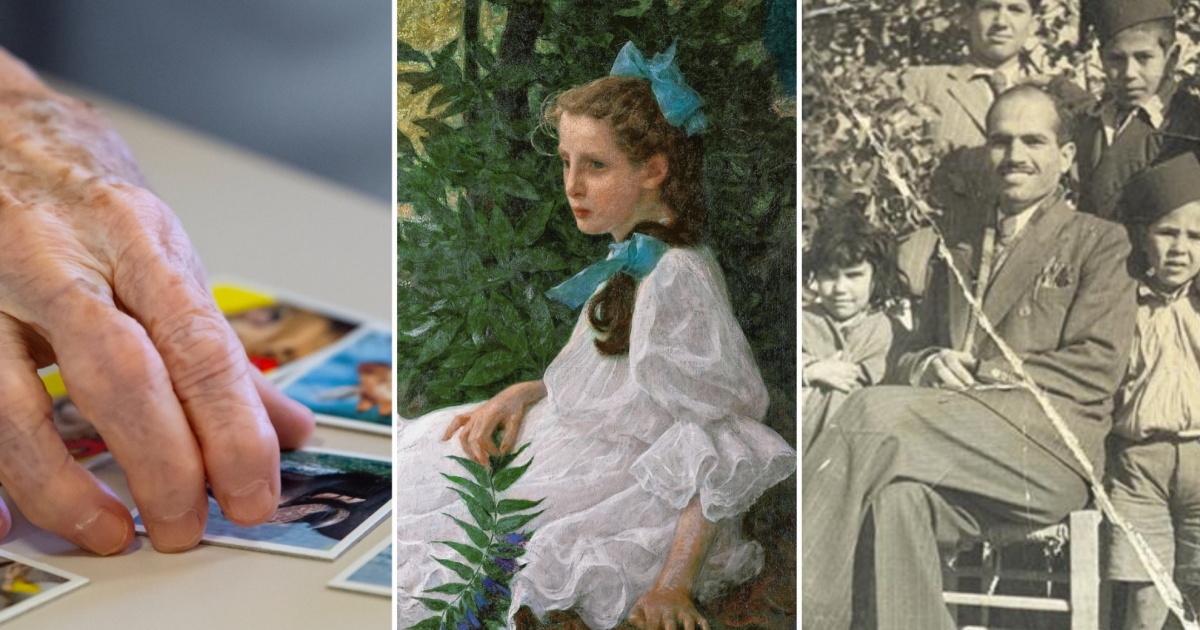We publish content from the “Otium” cultural page monthly
1
Alzheimer’s disease: theories, practices, and treatment models
By Matteo Burri, Historian of Science
Following on from the first episode that appeared on Otium on September 29, this second episode focuses on the development of therapeutic approaches for Alzheimer’s disease. The treatment, the cure, was already being talked about in 1978, the year in which one of the most important scientific articles on the subject was published. In this article, Smith, Swash, and other colleagues study the relationship between choline and acetylcholine in relation to the phenomenon of Alzheimer’s disease. The article published in The Lancet proposed what would soon become a practical cholinergic approach. In short: In the brain, acetylcholine – a neurotransmitter involved in communication between nerve cells – sends messages from one cell to another. Then the enzyme – acetylcholinesterase – destroys acetylcholine immediately after doing its job so that it does not accumulate between nerve cells. Already in the early 1980s, the cholinergic hypothesis related to the pathogenesis of Alzheimer’s disease proved to be a powerful motivation for all those pharmacological strategies aimed at correcting cognitive deficits by manipulating cholinergic neurotransmission. Among these strategies, the strategy based on inhibiting the enzyme acetylcholinesterase has been so successful that it is among the most advanced strategies for treating Alzheimer’s disease. The mechanisms of action of inhibitors are very complex. Significant reductions in acetylcholine levels have been found in the brains of Alzheimer’s patients and these reductions may contribute to the well-known symptoms of memory loss and/or confusion. This knowledge has led to the development of drugs that increase acetylcholine levels in the brain – acetylcholinesterase inhibitors. These medications work by inhibiting the enzyme that breaks down acetylcholine, thus increasing the amount of this neurotransmitter in the brain. In fact, research has shown that there is not enough acetylcholine in the brains of Alzheimer’s patients. So the hypothesis is that by inhibiting the enzyme that destroys acetylcholine, a higher concentration of healthy acetylcholine can be maintained in the brain, thus increasing communication between neurons, and improving memory.
Over the past 50 years, Alzheimer’s disease research has seen major changes in understanding of pathology and therapeutic approaches. In the 1970s, Alzheimer’s disease was still considered a “rare” form of senile dementia and its etiology was unclear. The research focused above all on describing symptoms and on studying patients’ brains through analysis of post-mortem tissue. In the 1980s and 1990s, it was identified that certain proteins – such as beta-amyloid and tau – were found to accumulate in large quantities in the brains of Alzheimer’s patients. This evidence has led to a greater understanding of the biological basis of the disease and to the search for new drugs that can act on these proteins to – again – prevent or slow the progression of the disease.
Over the decades, Alzheimer’s disease research has never abandoned the cholinergic approach, also focusing on the underlying causes of low acetylcholine, such as the loss of neurons that produce acetylcholine in the brain. Many treatments remain effective, such as those associated with replacing these lost cells or stimulating other brain cells to produce acetylcholine, with the aim of preventing or (trying to) reverse the progression of Alzheimer’s disease. However, from the 2000s onwards, research into Alzheimer’s disease has seen increasing interest in early diagnosis of the disease and identifying biomarkers that can help identify it before the onset of the dementia process. Studies have therefore increasingly focused on the prevention and management of risk factors (such as high blood pressure, diabetes, or obesity). Finally, in recent years, Alzheimer’s disease research has seen a significant increase in the use of advanced technologies – such as brain image analysis and computer simulations – to improve understanding of the disease.
In an attempt to represent (very) synthetically the last fifty years of research into Alzheimer’s disease, we can say that this has seen a move from describing symptoms to understanding the biological basis of the disease, from the search for drugs to manage the disease. From symptoms to treatments capable of preventing or slowing its progression, and finally, from patient care to the prevention and management of disease-related risk factors from which we are not yet free.
2
Heart causes
By Matteo Bianchi, Curator Reflections on the Sidelines of the Luigi Rossi 1853-1923 Exhibition
introduction
It is perhaps an odd title to explain how Luigi Rossi’s work represents for me the perfect crossroads between culture and affection, family and work: the artist, whose centenary of death is being celebrated, was my great-grandfather. Deep, simple, and never trite, his intimate work offers images of the serenity we so often need: a grateful gift.
Several years ago when I was a student, I was lucky enough to discover the archive papers of Luigi Rossi thanks to the trust of my grandmother, who was the painter’s daughter: my teachers Ottavio Bissomi and Dante Isella encouraged me to continue the research that led to the first monograph edited under the precious guidance of Rossana Bosaglia, and in the exhibitions In the Cantonal Library and in the Villa Chiani in Lugano.
identification
In 1979, Rossanna Bosaglia titled her article on Luigi Rossi, European artistTaken on the occasion of the current exhibition at Pinacoteca Züst in Rancati. Tissini by birth, Milanese by training, a painter in Paris, a Symbolist painter from the Swiss region and finally linked to his lover Biffi Capriasca, Luigi Rossi reveals an open identity, faithful to the motives of his sincere art. In his time it was called “Swiss, Milanese, Parisian” and also “French but Italian”: from the native village of Casarati to Brera, from the Académie Goncourt to the Federal Commission of Fine Arts, from Milan to Capriasca, Luigi Rossi’s story is depicted in the calm manner that his work describes. , faithful to the subjects and always treated with dignity.
Childhood and life in the fields
These are the two subjects favored by the sensibility of the artist who was called at that time a “children’s painter.” From the school of pain focusing on dying childhood, like Anker in a similar painting, Luigi Rossi painted at the beginning of the twentieth century the luminous awakening of children touched by the first rays of light. The painting reflects a deep feeling of joy that lies in the symbolic pose and gesture of the children upon waking up. It also reveals a skillful construction that relies on drawing, photography, and formulating variables. Camp life represents a prominent stage in Luigi Rossi’s work: the transition from reality to symbol. The artist paints peasant scenes that are initially faithful to reality, then are depicted ideally and are permeated with a vein of nostalgia for the time of the decline of peasant civilization and the development of industry. It’s just a short step from Rossi’s mowers to the up-and-coming town of Boccione…
Democratic teacher, refined photographer
Luigi Rossi plays a role of profound social sensitivity in turn-of-the-century Milan in the Scuole dell’Umanitaria: he teaches the equal dignity of the arts, giving nobility to the literal languages. In Ticino, together with the architect Guidini, he supports the vital force of drawing education.
The happy Parisian season, which saw close contact with Daudi and Loti during the second half of the 1980s, produced wonderful illustrated editions in watercolor which proved to be a suitable technique for the artist’s direct work, and which were later taken up alongside the Lombard watercolorists of the Permanente. Milan: The comparison between Parisian caricatures and watercolors shows the transition from book to drawing.
Art collections and discoveries
In addition to the confirmations of the masterpieces of the Union, the Swiss and Italian museums, and the works in private collections that record a lively movement, some remarkable discoveries open to the visitor’s eye: next to the portrait of Alphonse Daudet that guides us between through the papers and the illustrated books, the books of the Ciani brothers are encountered on the Montazah Street against the background of Desolation For Vincenzo Villa: We hope it will be a good omen with the aim of restoring the prestigious space of Villa Ciani to art. Among the art collections, I am pleased to point out the Corner Bank Collection, which is particularly culturally sensitive, and the Luigi Rossi House Museum Collection, where precious archival papers are kept alongside paintings and drawings. The current catalog of the Rancate exhibition, published by Pagine d’Arte, and produced by Salvio in the graphic arts, is a comprehensive testimony to this: on the cover, the sweet image of the grandmother as a child, Genzianella, the serene one in which I find the atmosphere of a family .
3
Testimony of Salman Abu Sitta
Written by Gilberto Gilberti, historian
Salman Abu Sitta*’s work can certainly be defined as autobiographical, but it is not simply a narration of personal experience, as the facts of his life are always connected in a profound way to the historical events in his homeland: Palestine.
In human life there are facts, events that not only determine some banal dynamics determined by the calendar, but set the direction, give meaning and meaning to all existence.
An eleven-year-old boy experiences the tragedy of expulsion from his homeland in southern Palestine. “On that fateful day in mid-May 1948, riding behind my brother, I turned my head back and took one last look at the place where I was born,” he recalls. I looked at the smoking remains of our homes, the ruins of the school, and the demolished mill. The meadows and palm trees slowly disappeared behind the horizon. The pain chokes me, but I do not despair. No, I felt like I was being recruited on a rescue mission, this return mission that would accompany me for the rest of my life… I spent the next 70 years giving faces and names to these “invisible” enemies. “Al-Main, the place of my birth, which was a prisoner in their hands, never became their property.” That child will find himself living his youth in the so-called Gaza Strip, and he will live the terrible days of the first Israeli occupation of that land, and in these pages he presents an accurate testimony, full of details, which is for the reader. Little is known about it in the West.
The boy will travel many times, become an engineer, but he will never forget his commitment to thinking and working for his return to Maine. He writes: “My journey took me to Egypt, Kuwait, England, Canada and many other places. But none of these were my destinations, just stops on the way back. The final destination, my home, remains my only goal.”
Abu Sitta was responsible for founding the Palestine Land Society in London, which aims to establish the right of Palestinians, under international law, to return to the lands from which they were expelled without displacing Jewish settlers. Thanks to his technical knowledge, he prepared several studies on the subject until it was publishedAtlas of PalestineWhich constitutes an essential work to know the entire Palestinian historical issue.
Whoever wants to know “from the inside” (if I can express myself that way) the story of tormented Palestine cannot avoid reading the works of Salman Abu Sitta, a unique testimony, especially for the Italian-speaking reader.
*Salman Abu Sitta, My return map. Palestinian memoryRome, Q Editions, 2020

“Infuriatingly humble social media buff. Twitter advocate. Writer. Internet nerd.”

